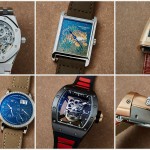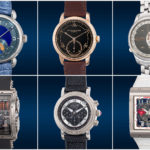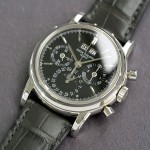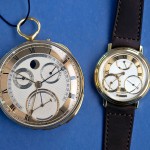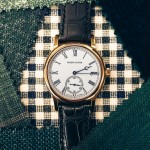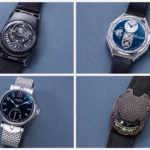Highlights: Independent Watchmaking at Phillips Hong Kong
Journe, Benzinger, Gerber, and more.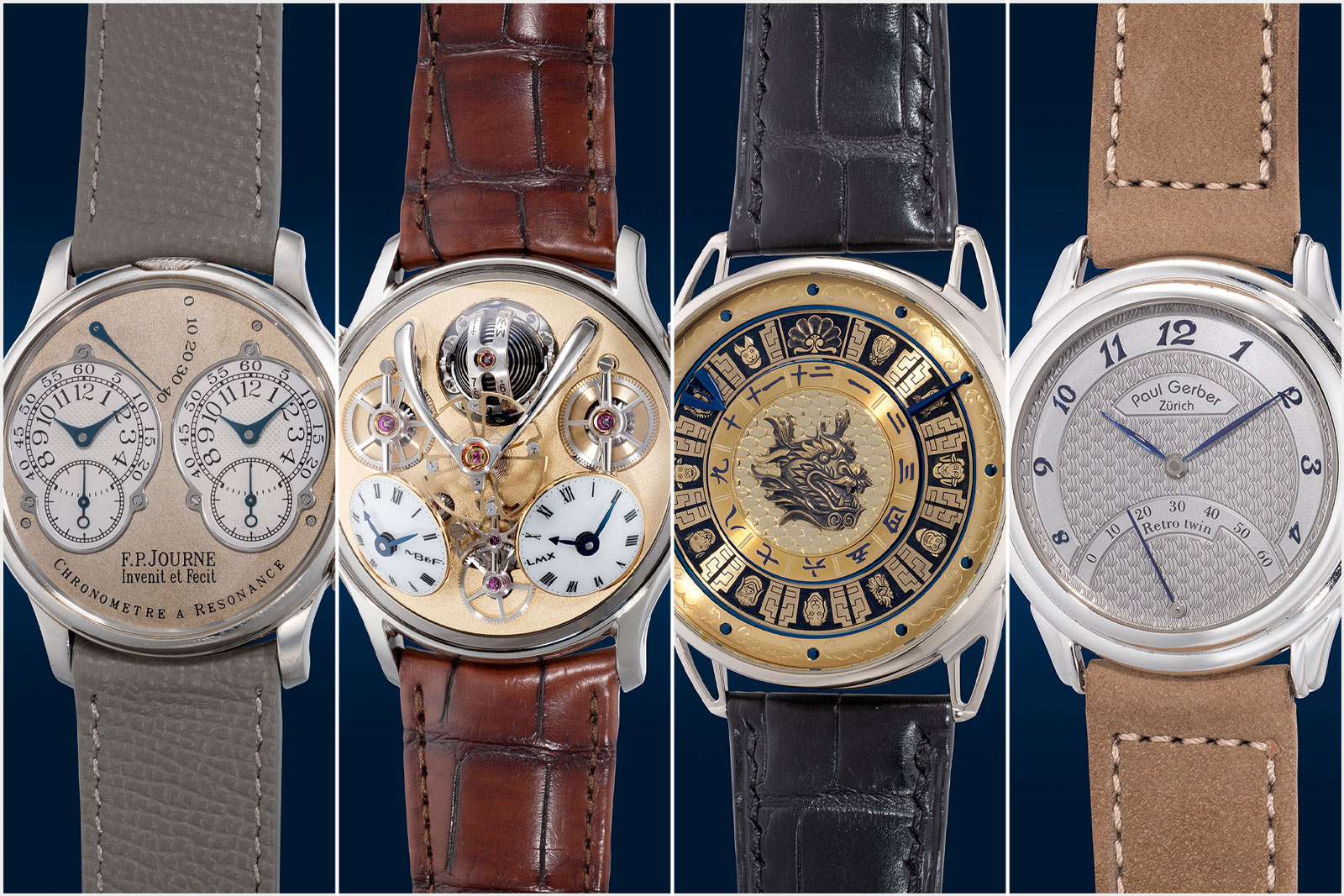
With the Geneva auctions just concluded, the sale season moves to Hong Kong, where Phillips’ The Hong Kong Watch Auction: XVIII happens over two days on May 24 and 25. The sentiment evident in Geneva will likely continue in Hong Kong as well, which might mean more value buys and in a handful of instances, outright bargains.
We round up some of the highlights of independent watchmaking in the sale, ranging from prime examples that are more affordable than before, like a pair of F.P. Journe with brass movements, to more esoteric watches like an IWC decorated by Jochen Benzinger to a Paul Gerber retrograde seconds with double rotors.
The Hong Kong auction takes place on May 24 (lots 801-934) and May 25 (lots 935-1083), and the online catalogue is here.
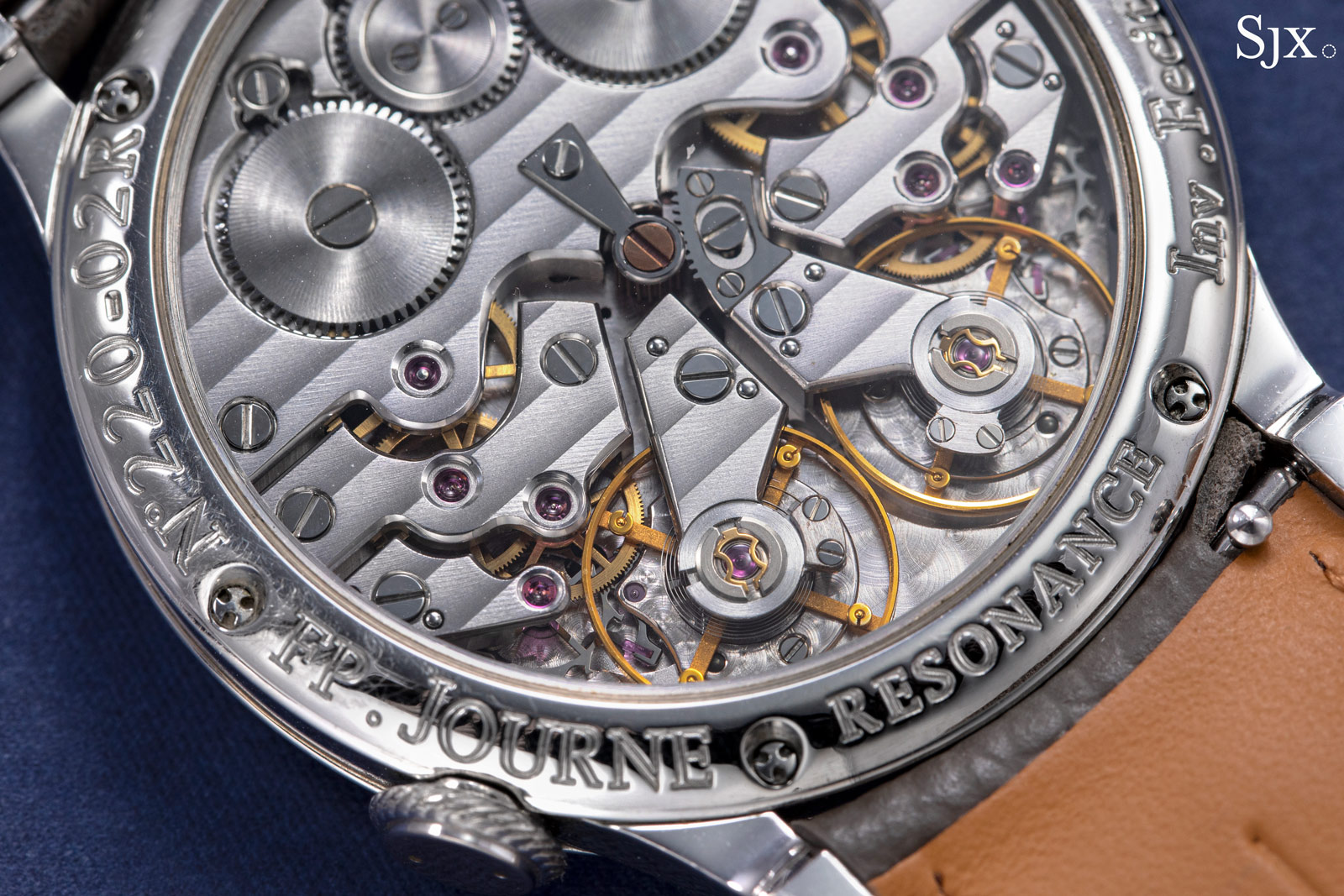
When brass is more valuable than gold
This is a fine example of perhaps the quintessential F.P. Journe – a Resonance from 2002 with a platinum case, white gold dial, and brass movement. It is not the rarest variant of the model, which fortunately makes it relatively more affordable.
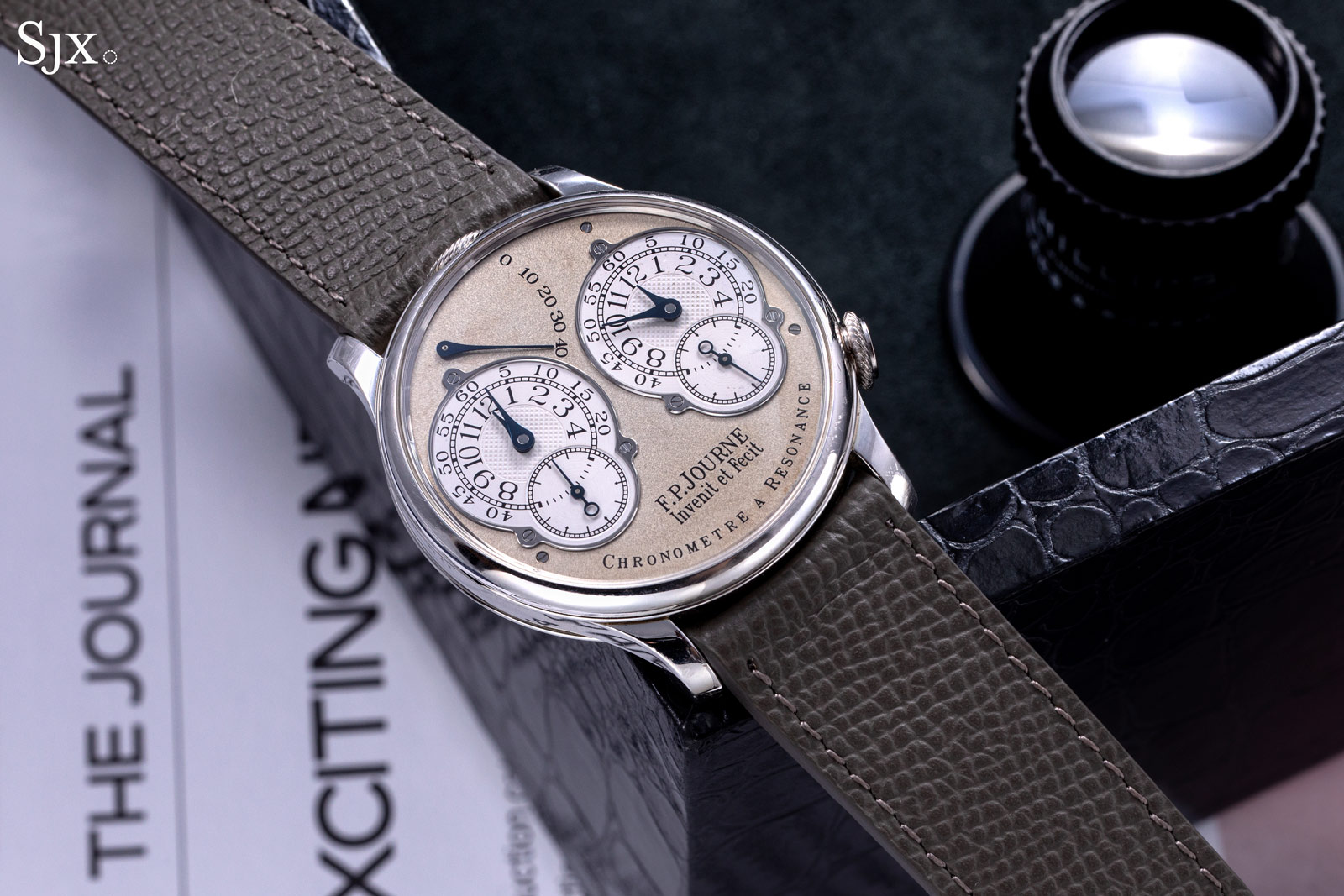
Even now, over 20 years since the original Resonance was introduced, I am not entirely sure the early examples are mechanically perfect going by personal experience. But they are undoubtedly important watches from a significant brand.
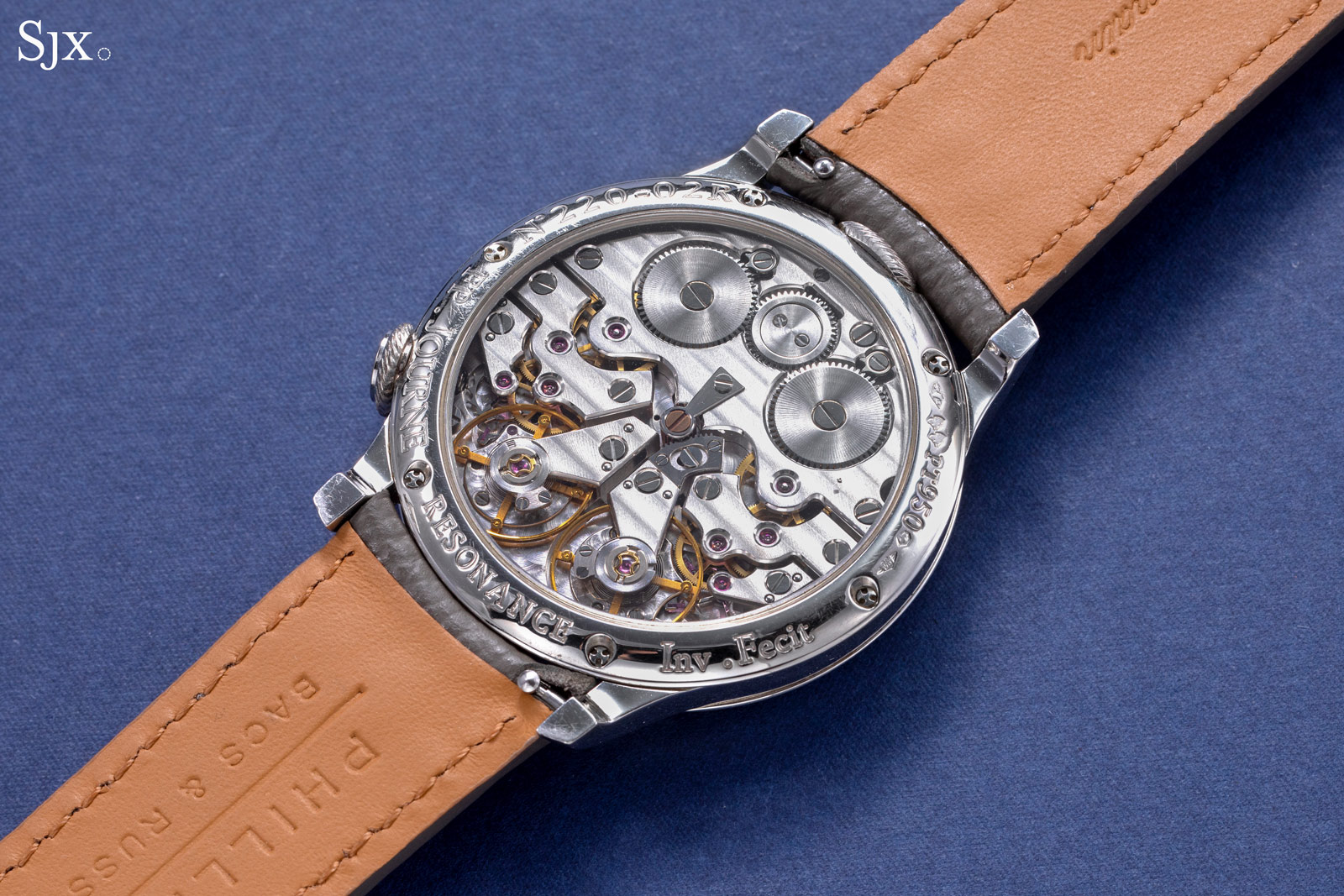
Watches from this period have an intrinsic appeal that the more polished later watches lack. Certainly less refined than the subsequent watches with gold movements, examples with brass movements have more character. The rough edges and inconsistencies attest to the foundational period of the brand.
Dating from 2002, this Resonance is a specimen example from that time. It produced towards the end of the production run of the model, but still has its bridges and main plate in rhodium-plated brass.
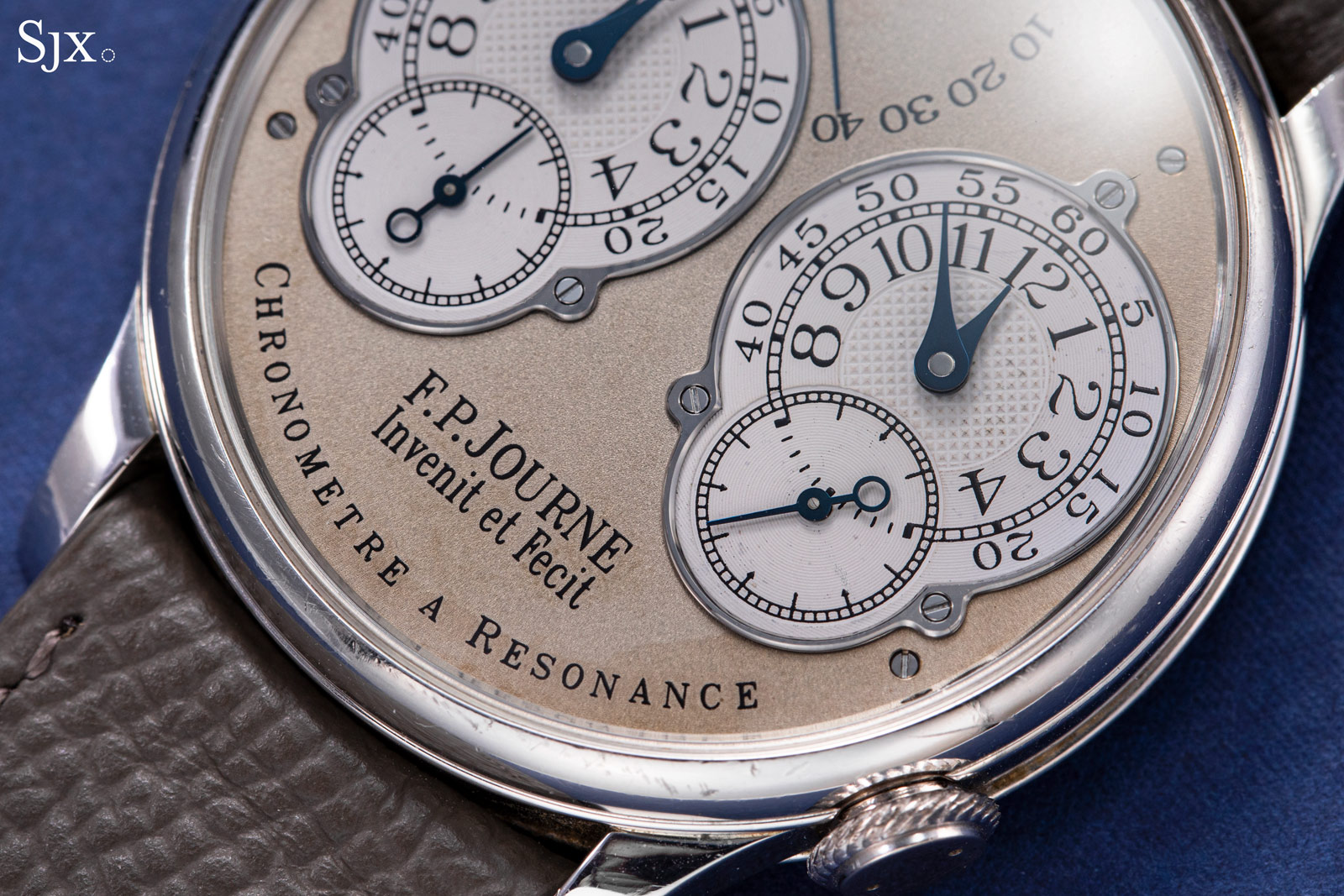
The watch does show signs of wear, including some oxidisation on the dial that’s common for watches from this period, but the condition feels honest. It’s accompanied by all its original boxes, documents, and accessories.
With the slow decline of values for most watches, the Resonance is becoming more affordable, and this has an estimate of HK$940,000-1.80 million, or US$121,000-231,000.
866 – F.P. Journe Octa Chronographe Ruthenium
While the Resonance above is probably the watch to have for someone with a budget for just one F.P. Journe, this is a little more niche.
It’s a Octa Chronographe from the Ruthenium collection, which was a series of limited edition watches with ruthenium-plated dials and movements. The series, which included the Resonance and Tourbillon Remontoir d’Egalite, was launched in 2002 to mark the end of brass movements.
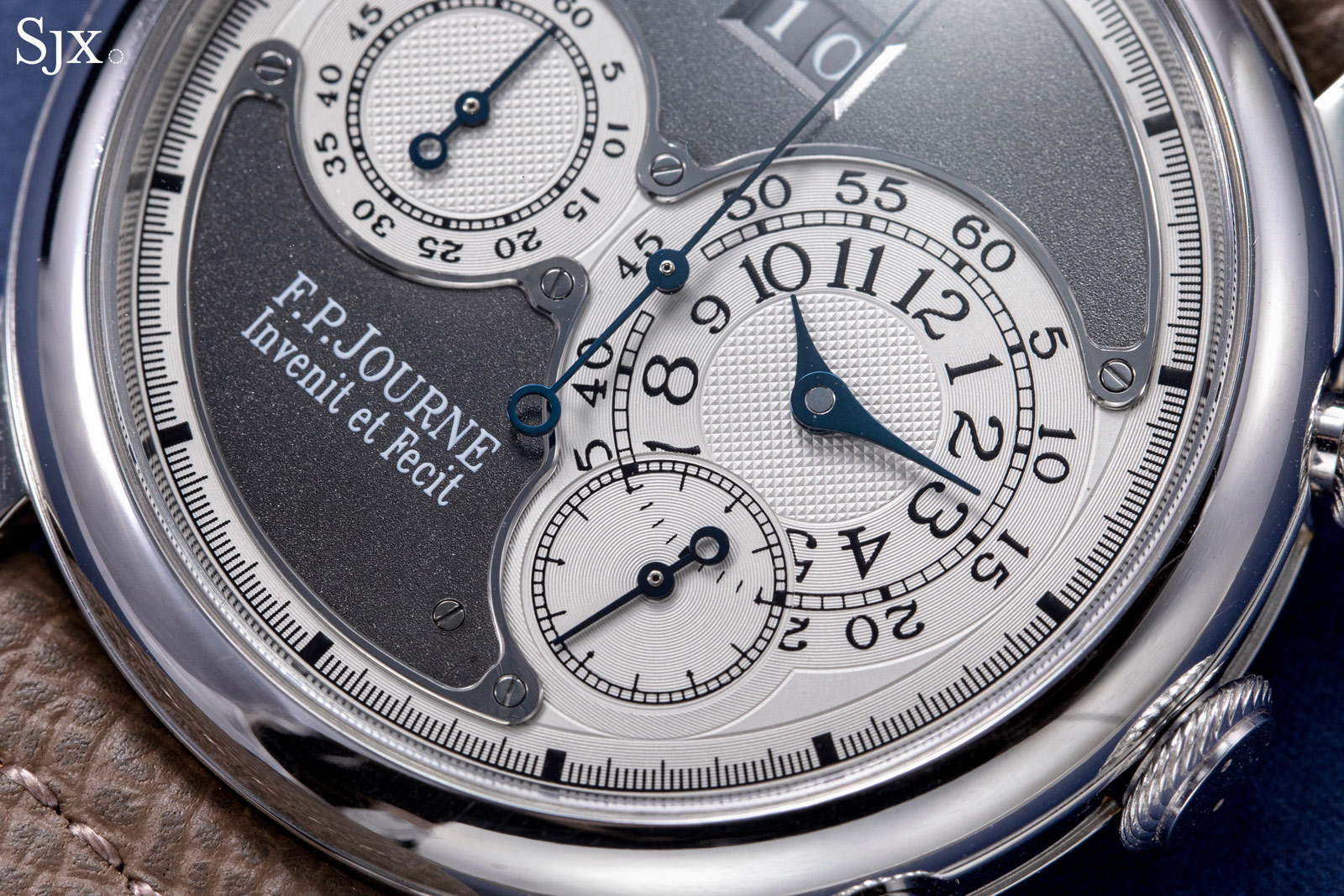
The dark grey dials have a slightly shiny, granular finish, making them reflective despite the dark colour. Unusual at the time because of their dark dials, the Ruthenium collection is now an interesting subset of early F.P. Journe watches.
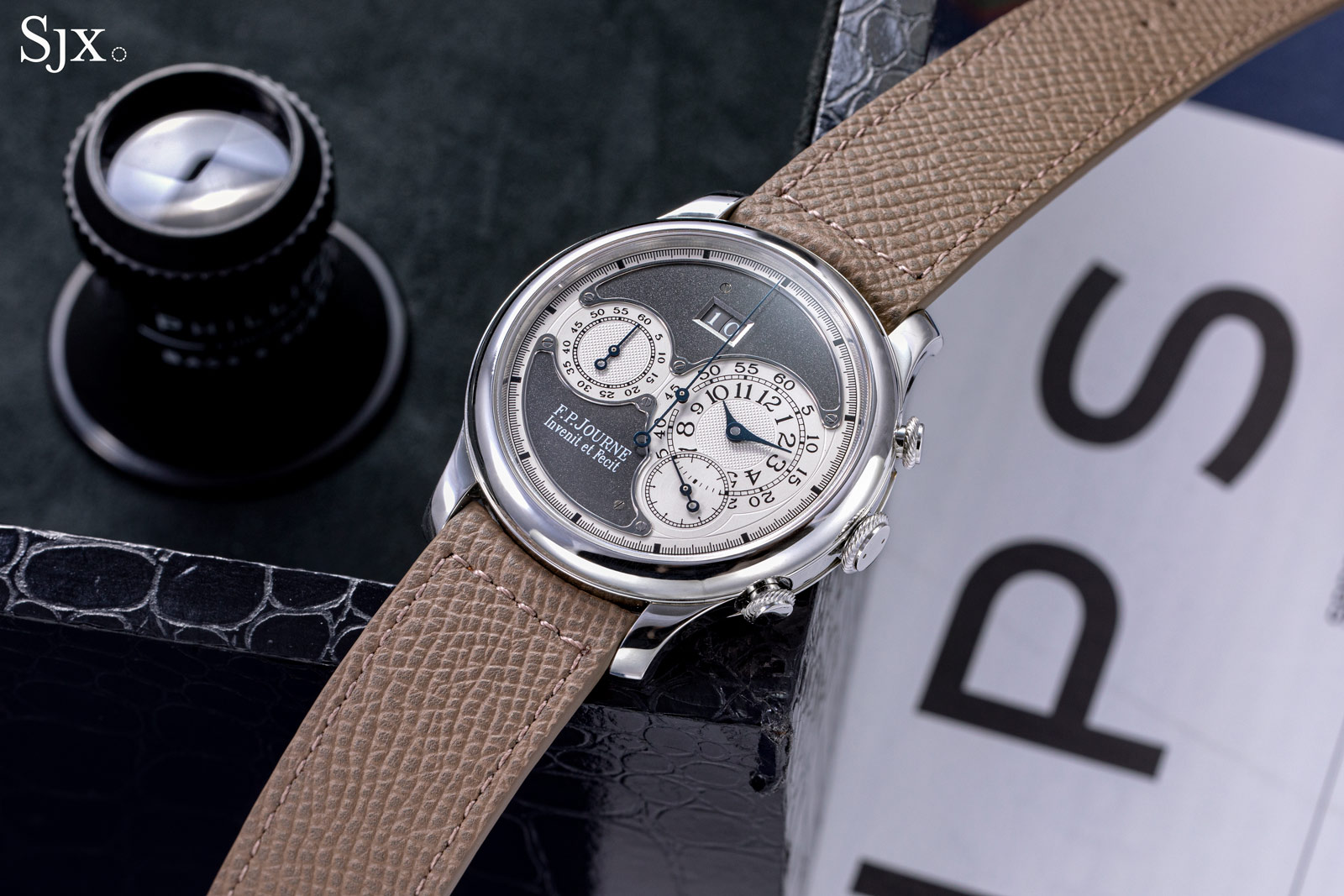
This is an Octa Chronographe, which is one of the most interesting modular chronographs in modern watchmaking. Although it is a chronograph, it is not thicker than other Octa models with more basic complications like power reserve or date, a testament to Francois-Paul Journe’s clever construction that emphasised thinness.

This includes the original certificate dated 2005 and a period F.P. Journe burl wood box, though not the Ruthenium series box. It has an estimate of HK$700,000-1.40 million, or US$89,700-179,000.
875 – IWC Portugieser Tourbillon Mystère Squelette
A little-known model from IWC launched in 2008, this is one of the rare instances that a large, mainstream brand collaborated with an independent watchmaker. Although the case and movement were made by IWC, movement decoration was the work of Jochen Benzinger, the German specialist known for his open working and guilloche.

Now better known for watches under his own name as well as customised timepieces, Mr Benzinger historically worked for a variety of brands, including IWC, Chronoswiss, and Glashütte Original.
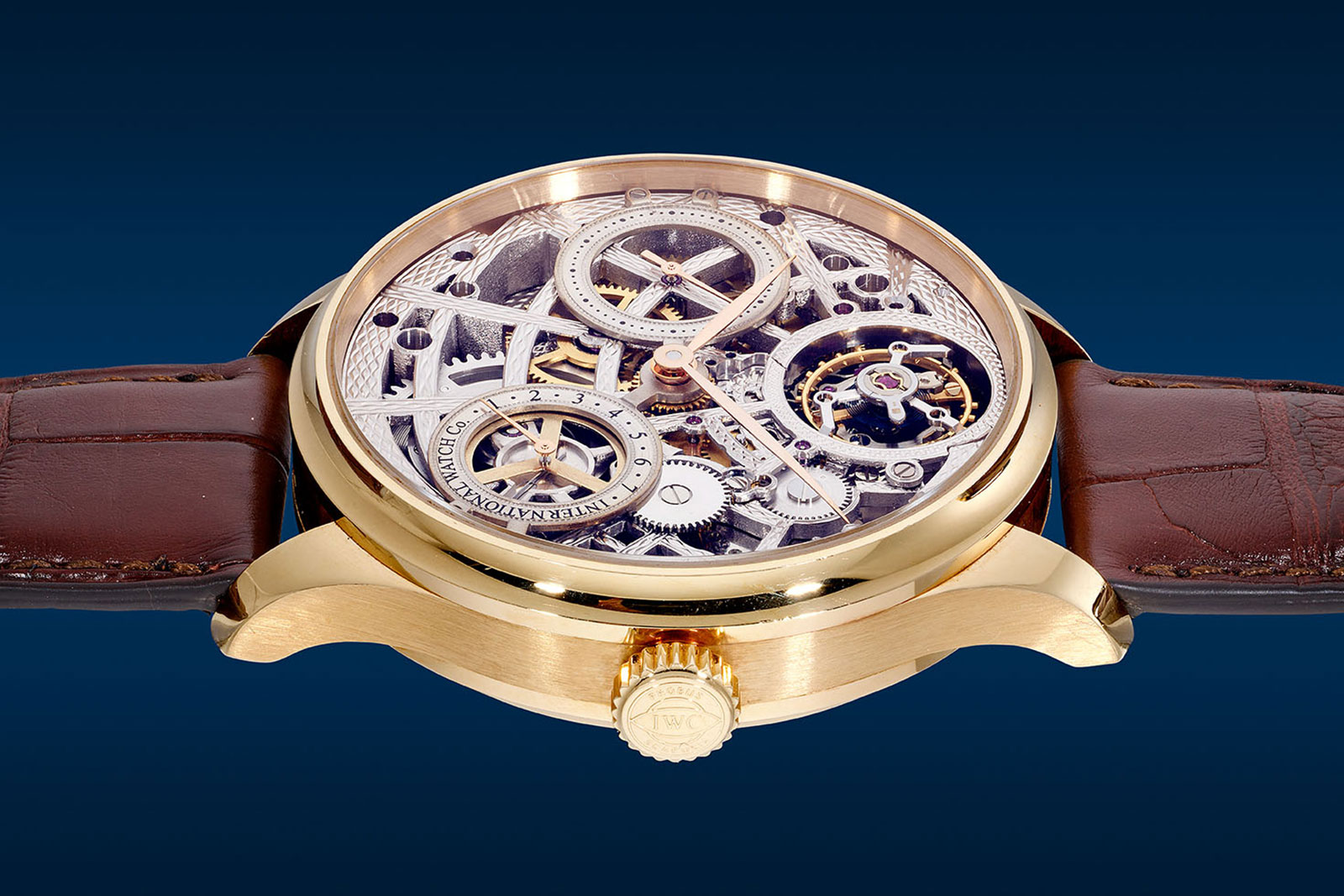
While the outline of the watch is recognisable as a Portugieser, the movement is typical of Mr Benzinger’s work. Combining IWC’s solid engineering with Mr Benzinger’s ornate aesthetics might seem contradictory, but the result is appealing.
Beginning with IWC’s signature seven-day automatic cal. 5000 – but here upgraded with a flying tourbillon – Mr Benzinger applied skeletonisation as well as engine turning, resulting in an intricate and elaborate decoration that is unusual for IWC. Despite the extensive decoration by Mr Benzinger, the movement retains the distinctive look of the cal. 5000 with its oversized rotor and Pellaton winding mechanism.
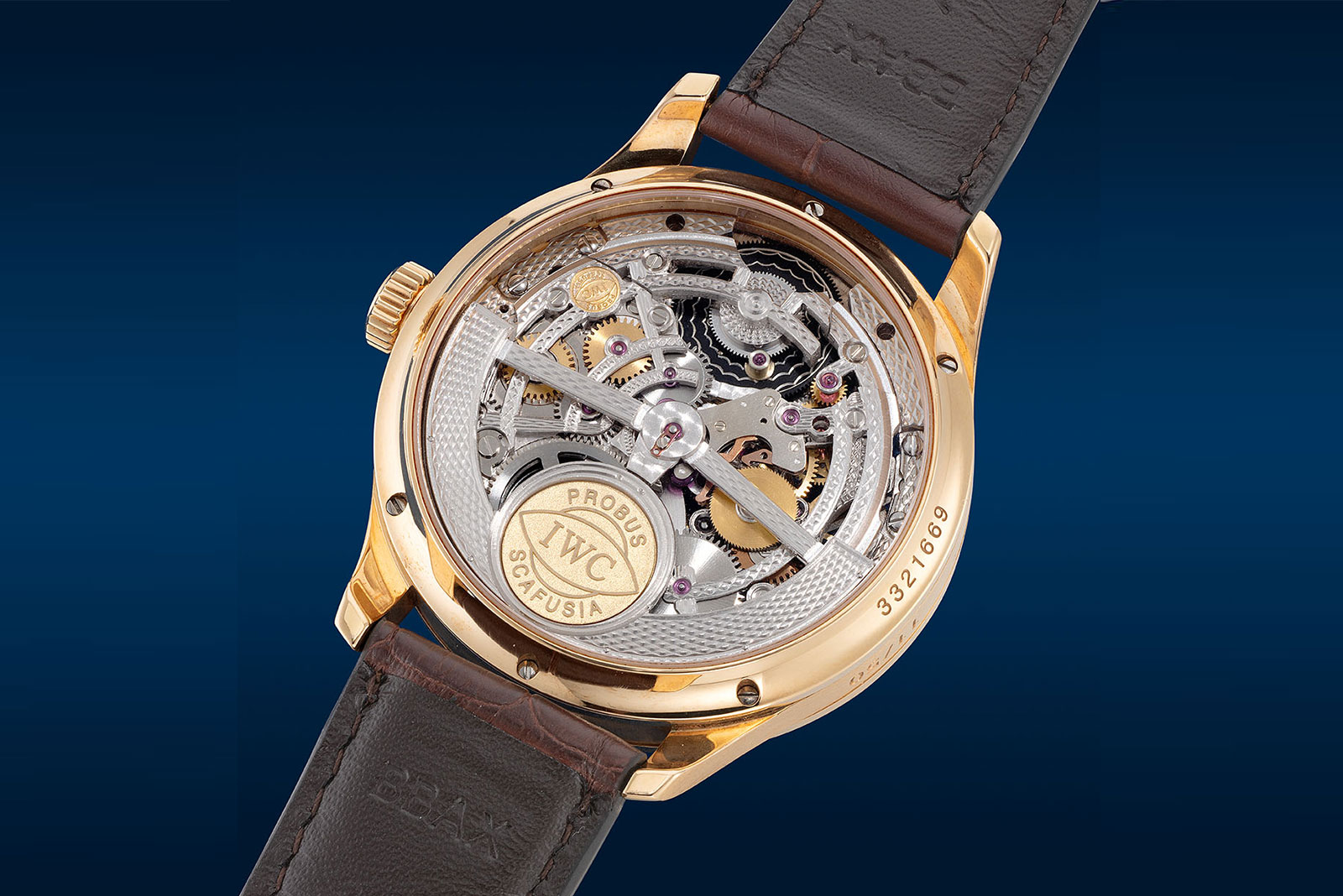
Presented as just the watch with an archive extract, but in well preserved condition, this has an estimate of HKD190,000–270,000, or about US$24,400–34,600.
903 – Urwerk UR-CC1 King Cobra
One of the most complicated (and expensive) Urwerk wristwatches ever made, the UR-CC1 never really caught on perhaps because of its size and cost. But it is arguably under appreciated because it embodies the Urwerk ethos while being notably different from the brand’s other watches.
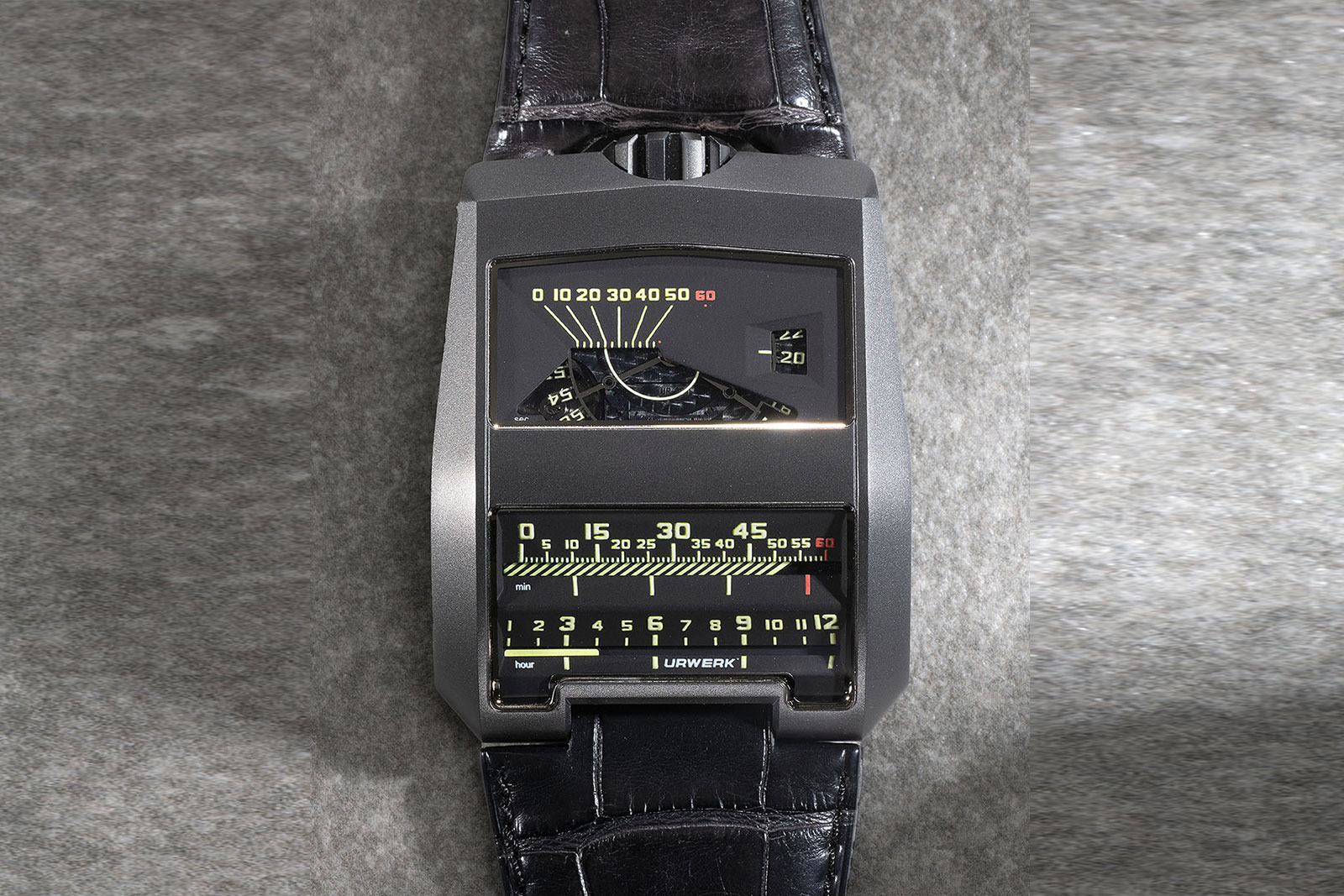
The UR-CC1 boasts a time display that’s novel even by Urwerk standards, which was in turn inspired by a weird and obscure vintage Patek Philippe. The front is a triple linear display for the hours, minutes, and seconds, with the seconds also have an additional digital display.

It was modelled on a prototype wristwatch entirely in yellow gold that was designed by jeweller Gilbert Albert with a movement made by Louis Cottier. Now in the Patek Philippe Museum, the striking watch never made it into production and proves that Cottier did more than invent the world time.
In 2018, Urwerk revisited the concept with the UR-111C, a more wearable and affordable watch with a single linear display.

This example of the UR-CC1 has a white gold case coated in wear-resistant AlTiN (Aluminium Titanium Nitride) and is in like-new condition. Accompanied by its box and papers, the UR-CC1 has an estimate of HK$750,000-1.50 million, or US$96,200-192,000.
Launched in 2021 to mark the 10th anniversary of the Legacy Machine (LM) collection, the LMX is essentially a hyper-evolved version of the very first model in the line, the LM1. This version was a limited edition of 33 with a steel case and gilt-frosted dial.
As a result, the LMX has the exact same functions: two independent time displays that can show two time zones, along with a vertical power reserve indicator. But LMX takes it to another level in styling and mechanics. The domed crystal is extra tall, while the movement has an extra-long seven-day power reserve.
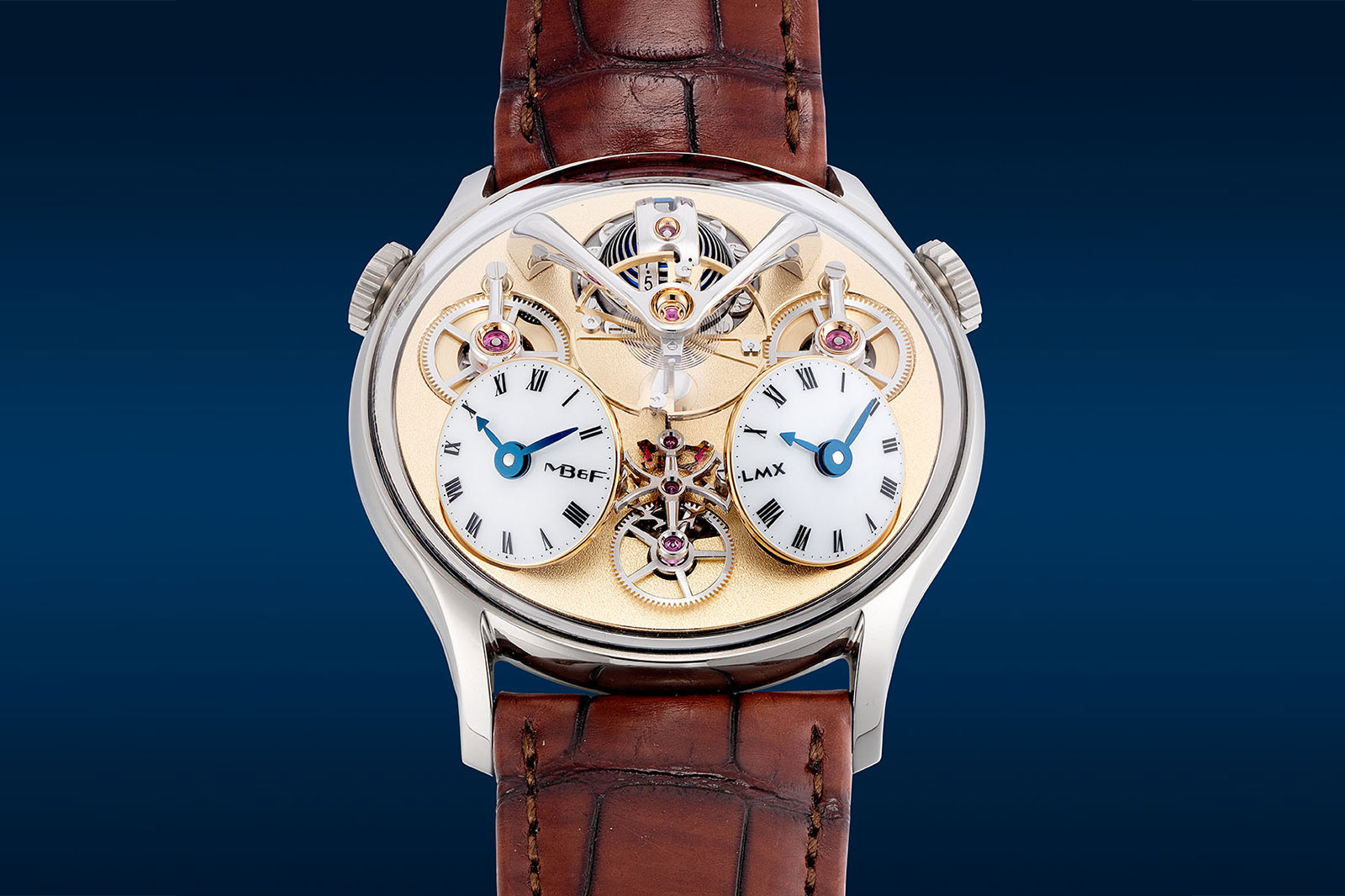
Like several other models in the LM series, the LMX has an exaggerated domed crystal that’s almost twice as thick as the case. This allows for a dial that is unusually three dimensional. The twin time displays, for example, are inclined at a near-45 degree angle, while the balance wheel sits so high it’s closer to the crystal than the movement.
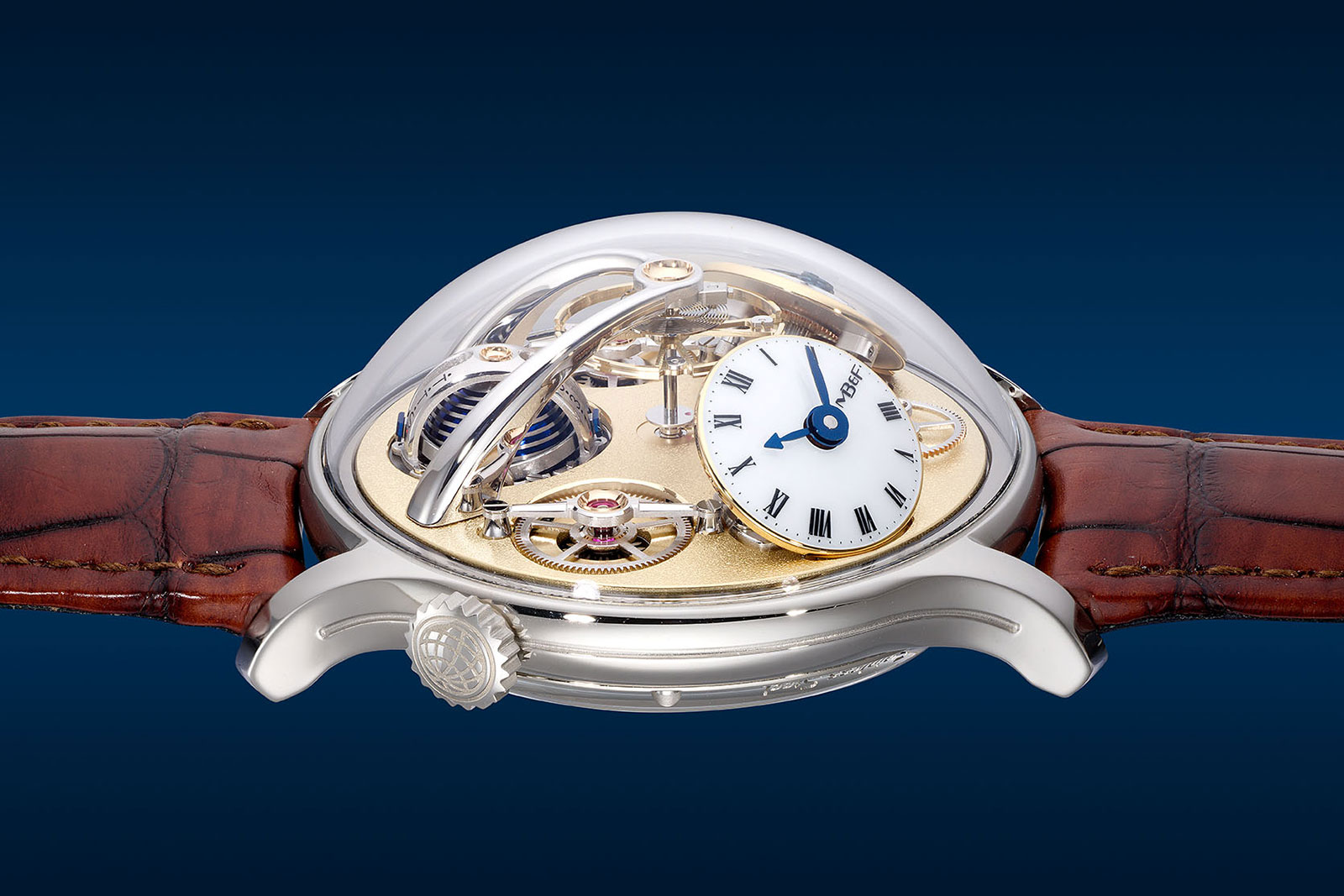
Like all LM models, the LMX has a manual wind movement. But its unusual feature are triple barrels that give it a weeklong power reserve. The three barrels are arranged in a radial manner, resulting in a near-symmetrical view through the back.
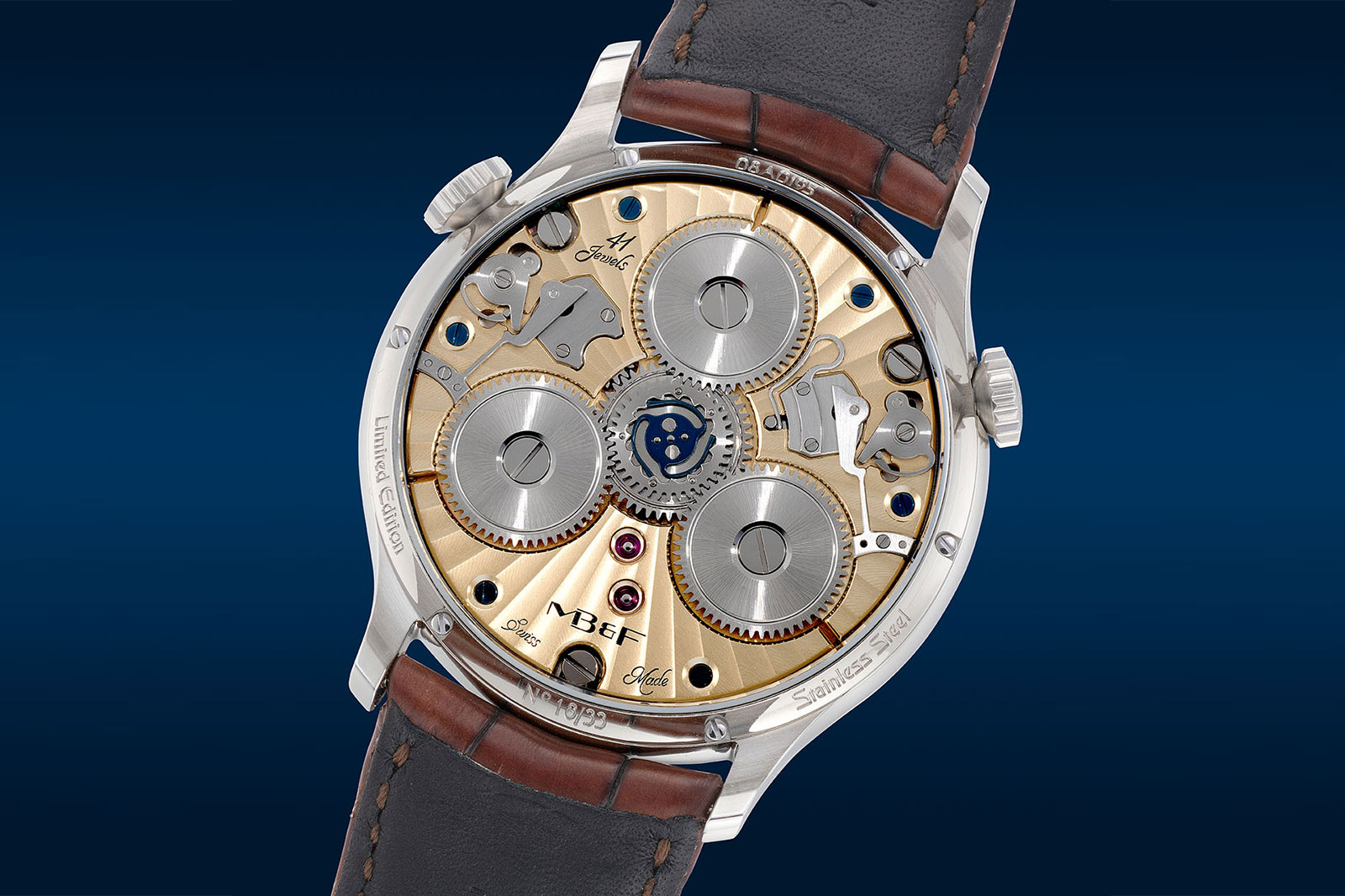
The most popular models in the LM line, the LM Perpetual and LM Sequential Evo, are sought after enough that they often sell for close to retail. The LMX, on the other hand, is less prominent, making it comparatively better value. This is presented with its box and papers, with a estimate of just HK$300,000-600,000, or US$38,500-76,900.
928 – Franck Muller Master Calendar Chronograph 7000 CC MC 36
This Master Calendar Chronograph 7000 CC MC is typical of Franck Muller watches from the 1990s and early 2000s, it reproduces elements from desirable vintage watches to create something that is classically styled but still modern. It’s essentially a “Stelline” blended with a Killy inside a Breguet-inspired case.
Notably, it has a 36 mm case in yellow gold, a compact size that’s less common than the 39 mm. The Empire case is fancily detailed with oversized screws on the lugs that are entirely decorative – they are actually screw-head caps pressed into each lug.
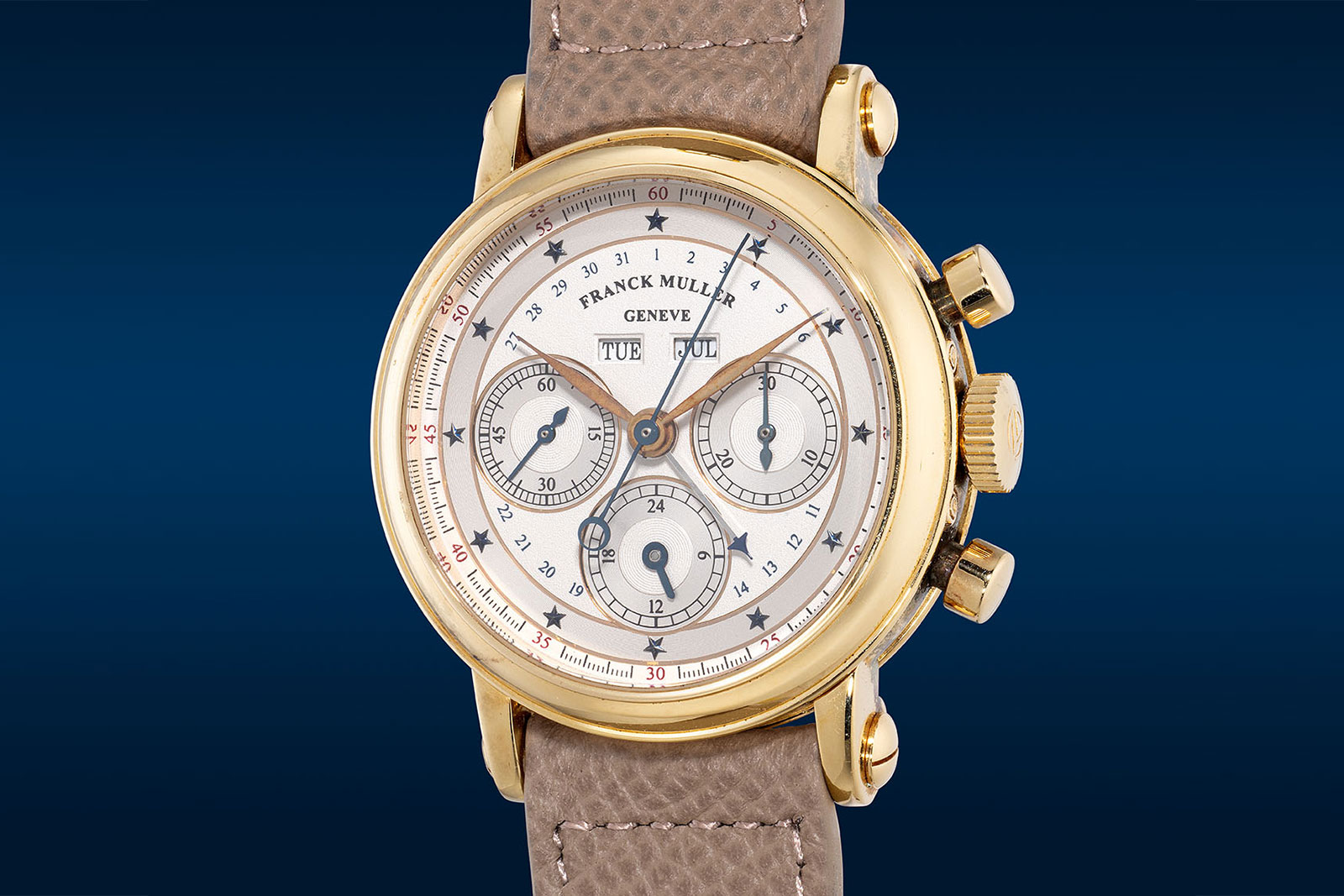
Like some Franck Muller chronographs of the period, it is hand-wind and powered by the Lemania 1872. But here is gets additional complications with triple calendar and 24-hour indicator in the six o’clock sub-dial. The calendar indications are adjusted via pushers in the case band.
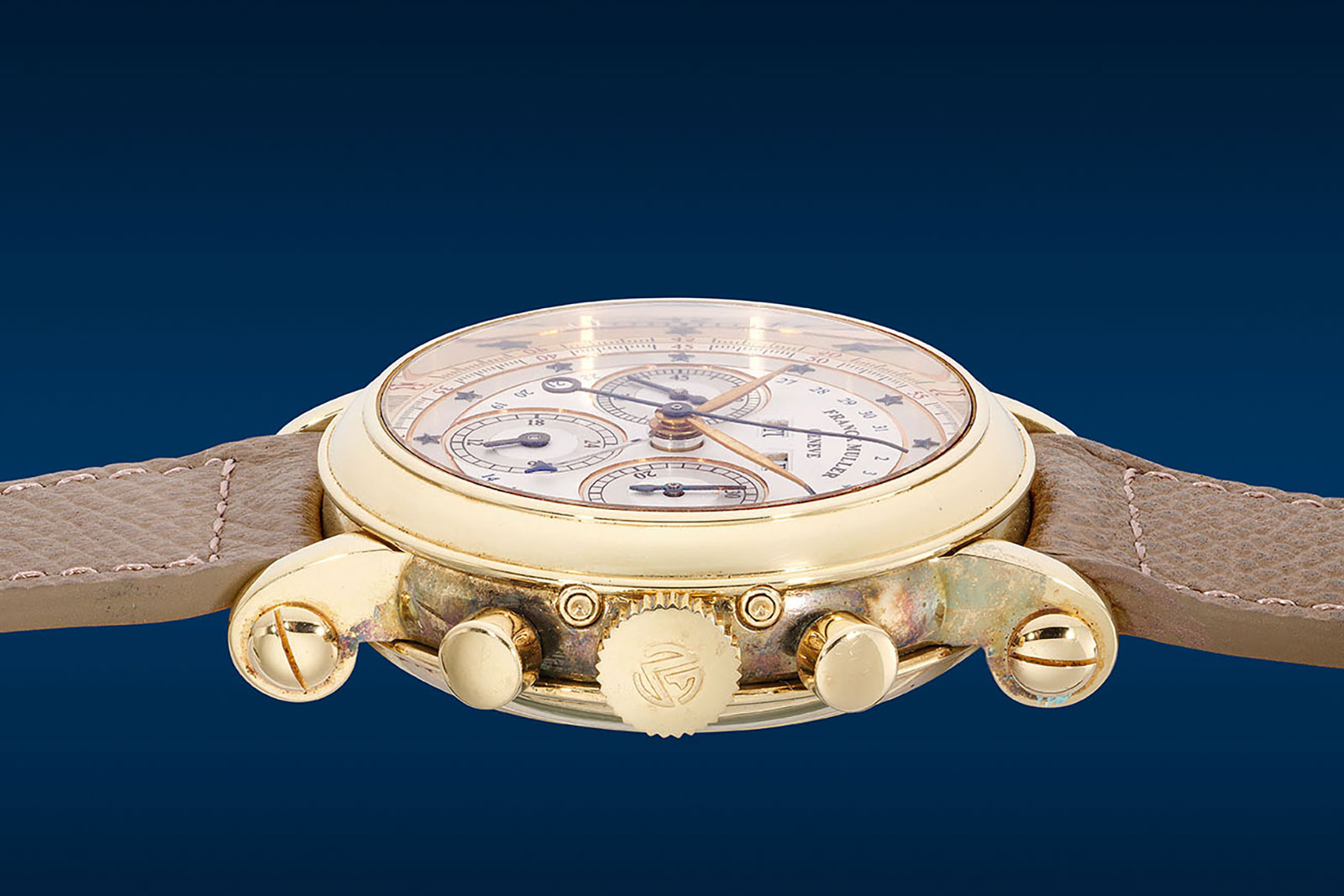
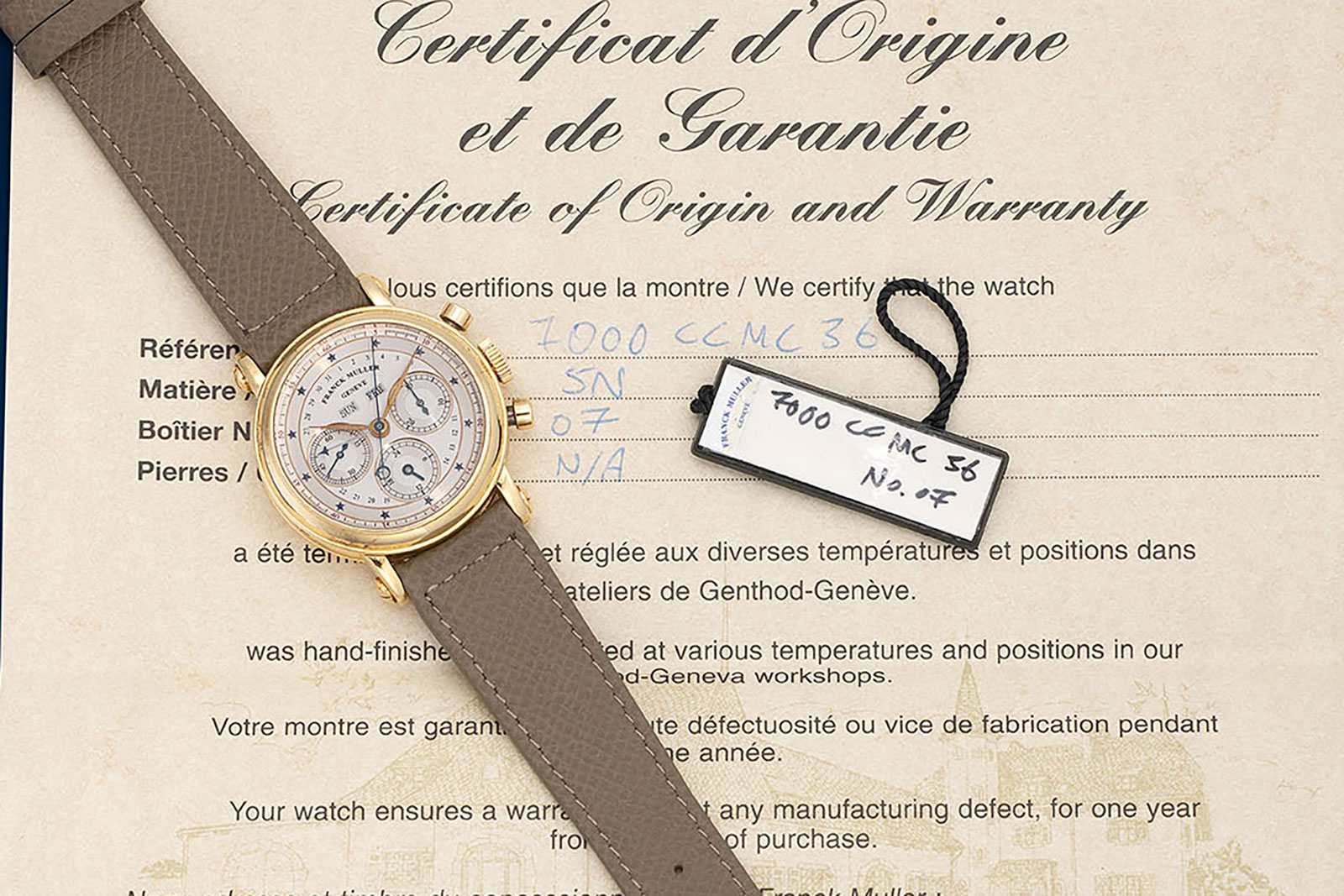
This includes the original certificate and has an estimate of HK$55,000-110,000, or US$7,100-14,100 – but also no reserve.
Thanks to its cofounder Davide Zanetta (who has since left), De Bethune’s philosophy in its first decade was to approach watchmaking in a diverse and interesting manner that spanned cultures and civilisations. It made watches that inspired by the Mayans, and also this, a tribute to the now-mythical water clock fountain of the Old Summer Palace in Beijing. To quote our 2013 story on the series:
“The Old Summer Palace, or 圆明园 (Yuan Ming Yuan), was an expansive palace complex used by the Qing Emperors until its destruction during the Second Opium War. One of its most famous features was a water clock with 12 bronze animal heads, each representing one animal of the Chinese zodiac. Water would spout from each head every two hours, according to the traditional Chinese system of time.
The heads, however, were taken during the looting of the palace in 1860. Seven have re-emerged over the years and now reside in Chinese museums, while the fate others are still unknown.”

The animal heads of the fountain gave birth to the Imperial Fountain, originally a set of 12 watches, each bearing one animal head. Four sets were made, one each in the three colours of gold as well as another in platinum, along with a small limited edition of four examples per animal with titanium cases.
This is a white gold example with bearing a dragon on a gold-tone enamel dial. Like the other watches in the series, the dial was engraved by Michèle Rothen, then a frequent collaborator with De Bethune.
Like other De Bethune models with decorative and engraved dials, this has peripheral hands that go under the dial centre, allowing the engraved dragon head to take centre stage.

The movement inside is typical of De Bethune calibres of the period, combining a space-age aesthetic, high-tech oscillator, and finishing inspired by antique pocket watches.
Both the delta-shaped barrel bridges and base plate are mirror polished, while the balance wheel is an in-house design of silicon, platinum, and gold.
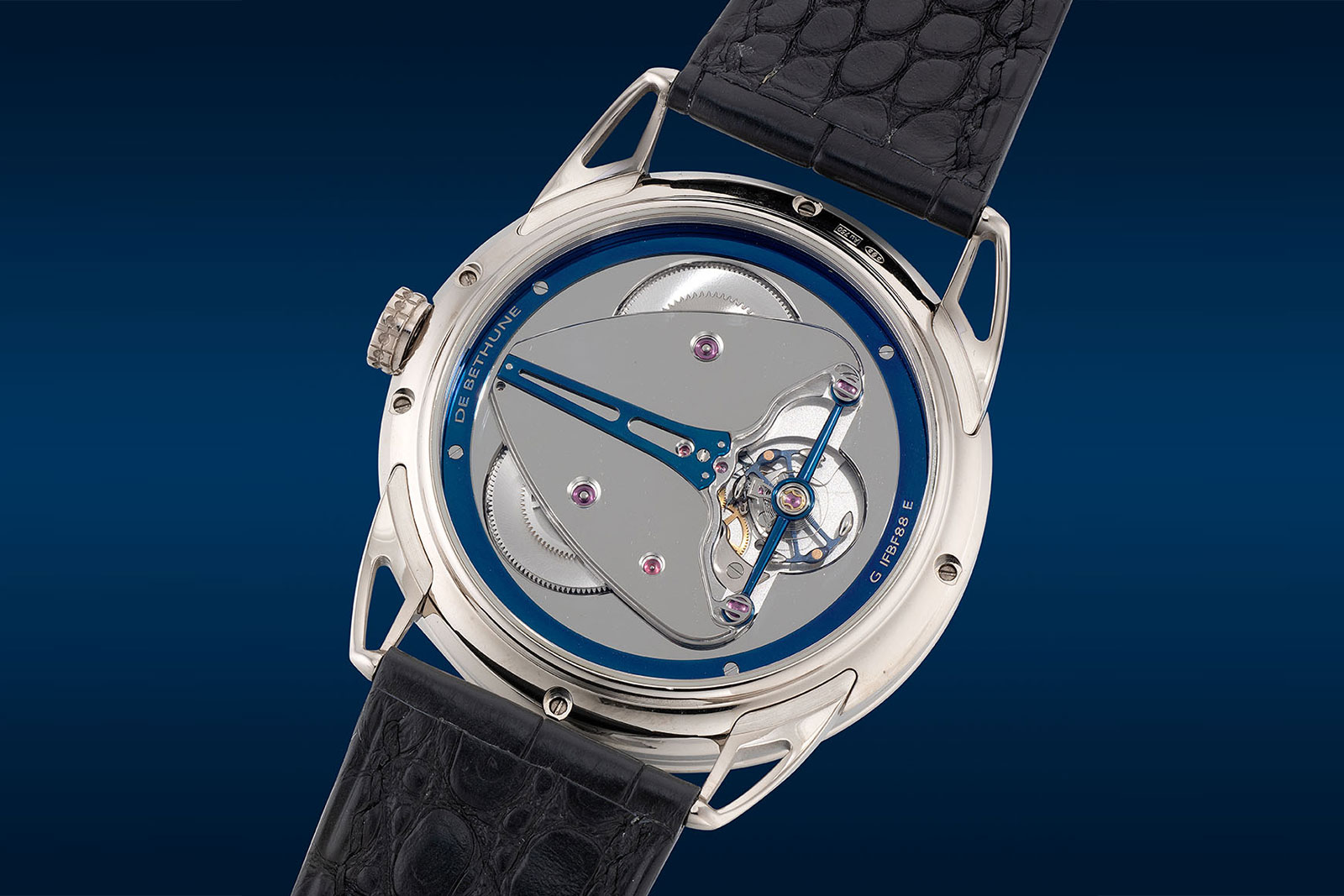
This has its original book-shaped box and papers, and an estimate of just HK$310,000-630,000, or US$39,700-80,800.
The final lot in the highlights is a watch with an original spirit, the Retro Twin by Paul Gerber (who just last week saw his unique creation, made together with his apprentice Anny Weber, sold at auction to benefit charity).
Though less prominent today because of the proliferation of independent watchmakers, Mr Gerber was a pioneer in the field. His retrograde seconds display was the first ever in a wristwatch – it arrived on the market in 1997. And his signature double rotor was launched in 1999.
But the Zurich watchmaker is probably most famous for having played a key role in Superbia Humanitatis, a mega-complication originally made by Franck Muller but enhanced with additional functions by Mr Gerber, making it the most complicated wristwatch in the world.
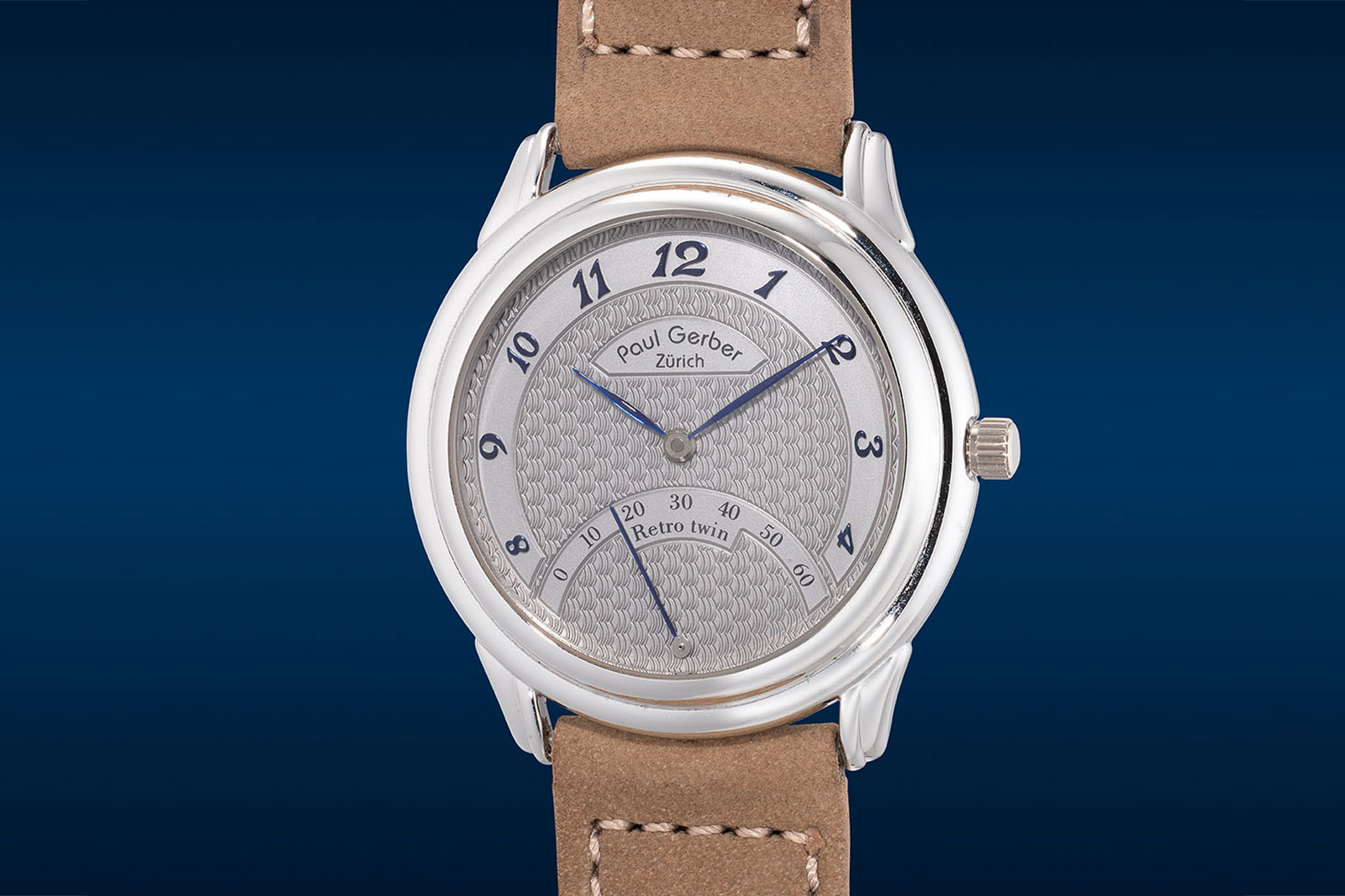
The Twin Retro is a compact watch with a white gold case that’s just 36 mm in diameter but contains a retrograde seconds on the front and on the back Mr Gerber’s patented double-rotor winding mechanism.
Relatively simple on the front, the Retro Twin has a guilloche dial with Mr Gerber’s signature pattern – done on a hand-operated rose engine – along with applied numerals and hands in blued steel. Though quite compact, the case reveals itself to be tall in profile.
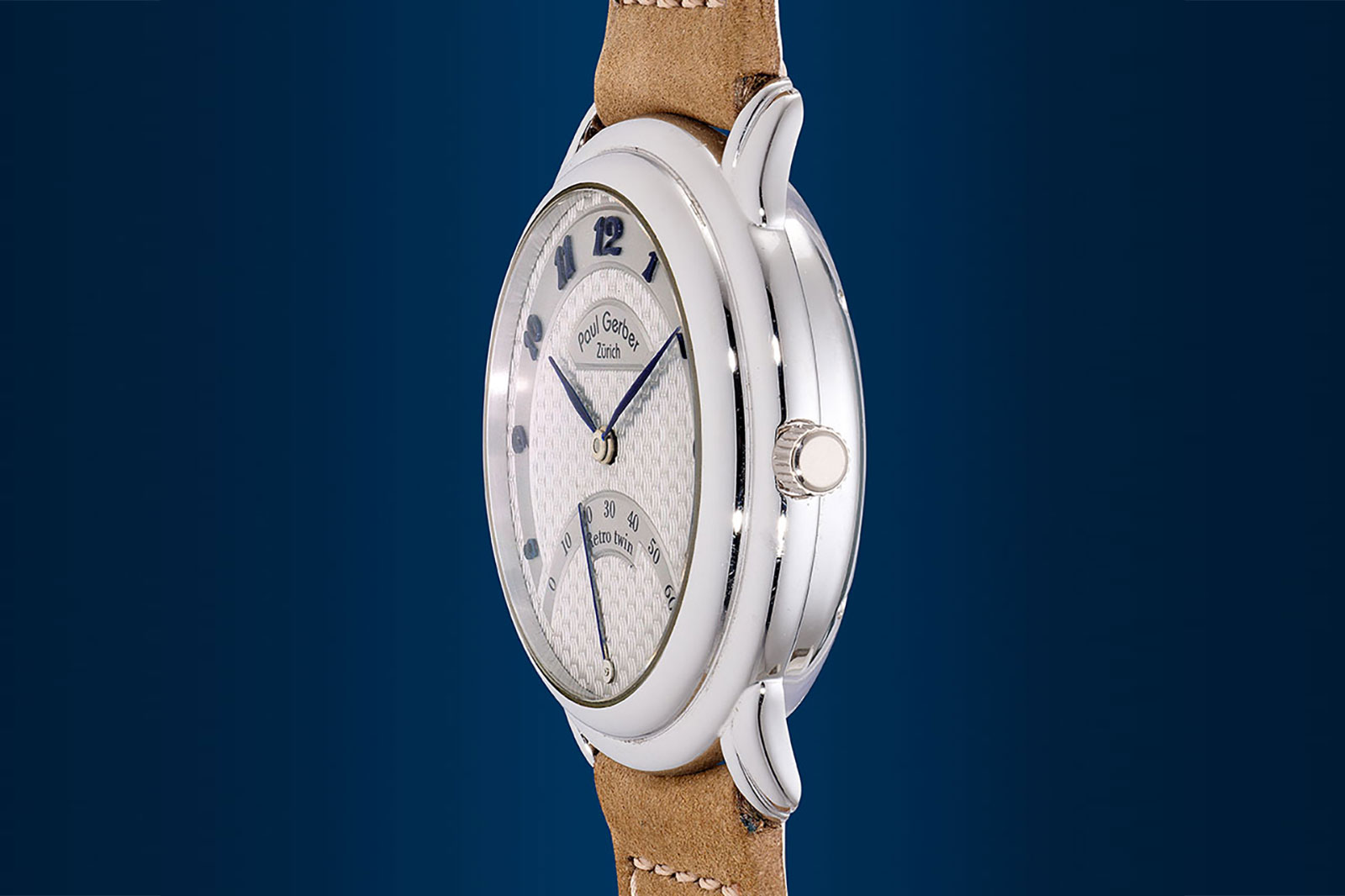
That’s a result of the intriguing cal. 15 inside. While it is now fashionable for independent watchmakers to facelift simple movements by applying elaborate decoration, Mr Gerber did the opposite.
He started with a commonplace movement, the manual-wind ETA Peseux 7001, and transformed it into a self-winding calibre with its own winding mechanism. Two tiny rotors in 18k white gold swivel back and forth on ball bearings to wind the barrel, giving the movement a quirky aesthetic that is unique.

The Twin Retro has no reserve and is affordable with an estimate of just HK$48,000-95,000, or US$6,200-12,200.
Preview and auction
The sale and preview exhibition will take place at Phillips Hong Kong in the West Kowloon Cultural District.
G/F WKCDA Tower
Cultural District
8 Austin Road West
Kowloon, Hong Kong
Preview
Open daily May 17-25 from 11:00 am-7:00 pm
Auction
May 24, 2:00 pm (lots 801-934)
May 25, 2:00 pm (lots 935-1083)
(All times are local to Hong Kong, GMT+8.)
The catalogue and online bidding are available on Phillips.com.
This was brought to you in collaboration with Phillips.

